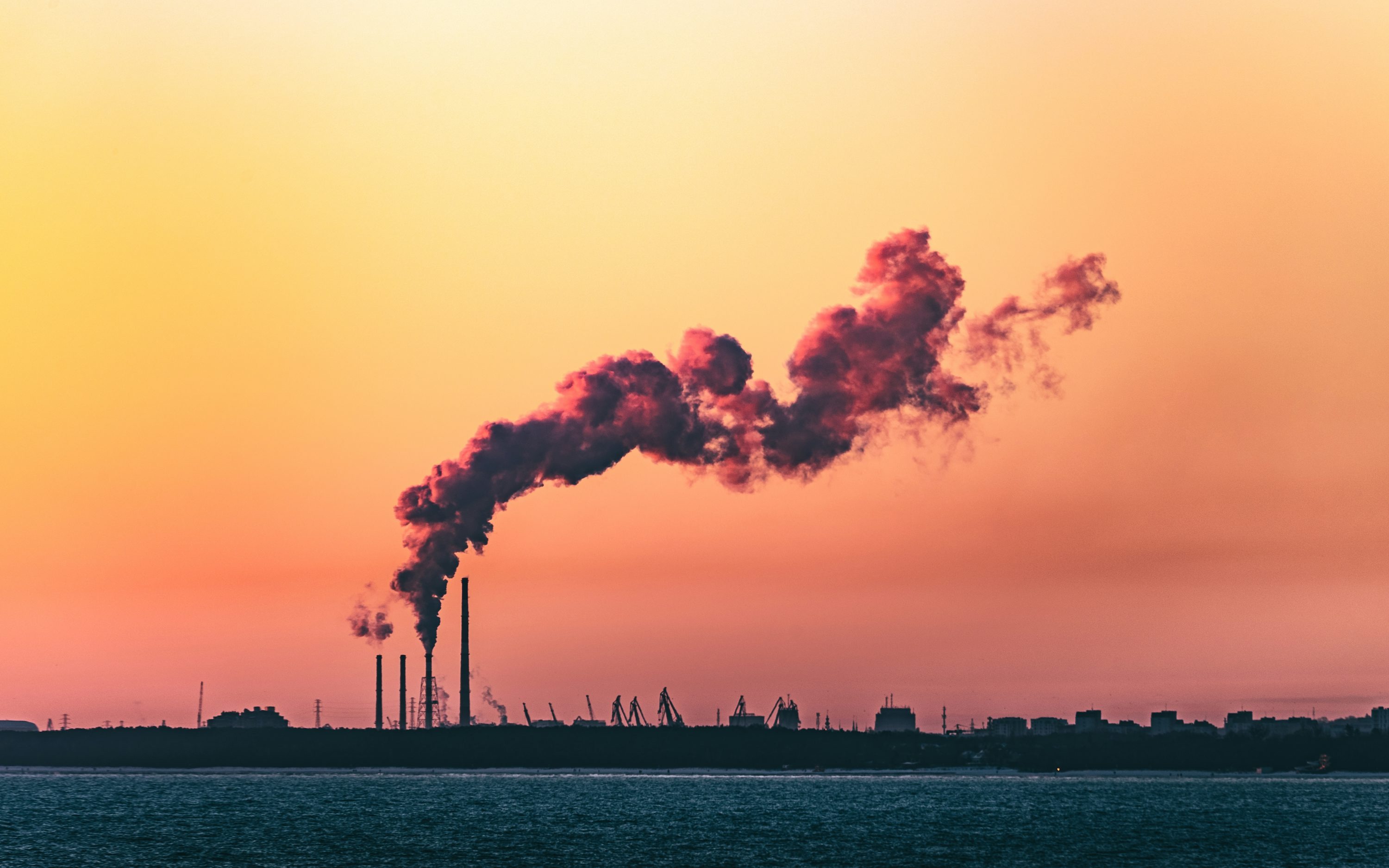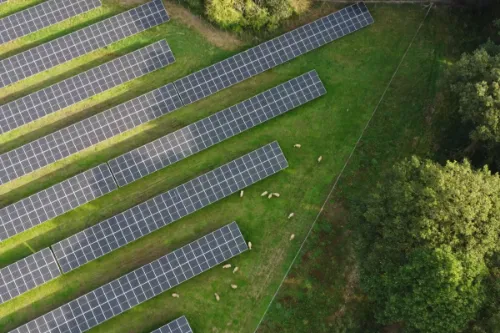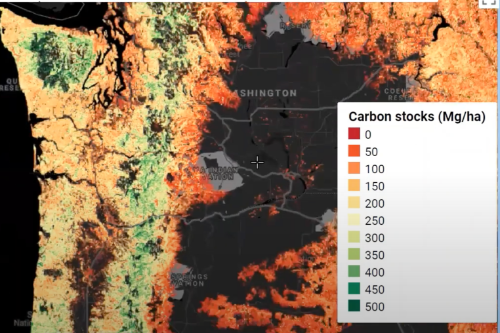Climate Nugget - July 16, 2025
The 10 Facts You Need to Know About Climate Change


Written by Hugo Kermiche 7 min read
Climate Change is such a complex issue that we frequently fail to grasp its true magnitude. Here is a list of ten statistics or comparisons that put climate change into perspective, and demonstrate that while this is a major problem, we are well equipped to fight it and progress is underway.
Just 4 countries are responsible for over half of all historical CO2 emissions
That’s it, just 4 countries: The United States (24%), China (15%), Russia (6.7%) and Germany (5.2%) make up more than 50% of all the CO2 that humanity has released to this day. But why does it matter that some countries emitted a lot of CO2 in the past? Well because CO2, once released, stays in the atmosphere for a long time, therefore climate change is the result of the cumulative emissions of the past, not simply of our current emissions. If by some magic we were to stop all emissions right now, we would still bear the weight of climate change. This fact also highlights the need for developed countries (which developed thanks to unrestrained carbon emissions) to fund the sustainable transition of less developed countries.
One way they have to reduce their impact is through carbon capture. New technologies allow captured carbon to be turned into new materials. Take a look at how one of our solutions turns industrial carbon into H&M clothing.
 Emissions from the textile industry
Emissions from the textile industry
The richest 10% of people emit 50% of the CO2, while the poorest 50% emit only 10%
Emissions disparities are not only between nations but also within societies. The wealthiest of us contribute much more to the crisis than the poorest. Even just the top 1% produce 16% of global emissions.
Carbon sinks such as forests or oceans allow the earth to capture and store some of that carbon. Tools like CarbonMap help identify key carbon sinks and guide targeted action.
The 23rd of July 2024 was the hottest day in 120, 000 years
But how do we know this? Well first of all, we know that it was the hottest day in recorded history, which goes back roughly 150 years. We also know that the temperature was relatively stable for the past 10000 years before the Industrial Revolution. Finally, we know that before that, we were in an ice age that started approximately 120,000 years ago, and so the temperature for that period of time was significantly lower. Therefore, this day was the hottest in quite a while. However, it’s very unlikely that it will keep its spot in the near future.
To mitigate the effects of such days in our homes, effective insulation is of paramount importance. New, more efficient insulators are being developed every year, such as Airium, an affordable and effective way to keep buildings cool.
Air pollution kills more than 7 million people a year, that's more than tuberculosis, malaria and hepatitis combined
It’s true. In the last few years the three deadliest diseases have killed less than 50% as much as air pollution: tuberculosis has killed approximately 1.25 million people a year, Malaria 600 000 and Hepatitis 1.3 million, combining to a total of 3.15 million people every year. This goes to show how the small particles emitted by cars and other fossil fuel consumers have a large impact on our health, especially in cities, where 58 % of the global population lives.
To limit the negative impact of air pollution, projects like Lungs Of The City deploy air treatment facilities and air pollution trackers, in an effort to make every city a breathing haven.
We lost 512 billion work hours to excessive heat in 2023
People working outside are extremely sensitive to heat and must be protected in case of heat waves. With climate change increasing their frequency, we are losing more and more hours of work globally because of high temperatures. This is especially harmful for low-income countries that have a high proportion of work dedicated to agriculture, where losses can reach as high as 8% of their GDP. This demonstrates that climate change constitutes a real economic threat and that it reinforces inequalities between countries.
To protect yourself from extreme heat, there are simple tricks you can follow. Find out more on our dedicated page.
 Construction workers are especially vulnerable to heat
Construction workers are especially vulnerable to heat
The climate crisis costed 2 Trillion Dollars in the past decade, that’s more than 80 times Nasa’s annual budget
This cost consists mainly of the destruction entailed by extreme weather events like hurricanes or typhoons, which are becoming more frequent because of climate change. This cost is, of course, expected to grow in the near future. Damages last year were 19% higher than the previous year. In the coming years, the task is to both mitigate our emissions to reduce the rate at which these events become more frequent, but also adapt our societies to them, as they will not subside even if we reach net-zero emissions.
In order to adapt, some of our labelled solutions have developed tools to reduce the impact of extreme weather events. For example, Centaur is a software designed to reduce the risk of floods in urban areas.
The world still subsidies more fossil fuels than renewables
Fossil fuel subsidies reached 7.1 trillion dollars in 2022, while subsidies for renewables only totaled 168 billion dollars. However, the calculated amount for fossil fuels includes direct subsidies (what governments give so that the product costs less than it takes to make), tax cuts (the government takes a smaller share than it usually does), and negative externalities. Negative externalities are not costs per se, but are the result of how much the cost of the product for society was not reflected in its price. For fossil fuels, most of the negative externalities come from air pollution, for which the government pays in numerous medical treatments, but also from the cost of repairing damages induced by extreme weather events. While these negative externalities are not direct costs, most economists agree that they should be included in the price, and it’s therefore a subsidy when they aren’t.
The lack of subsidies can make it difficult for sustainable developers to find funds. One of the ways they can still do so is by selling carbon credits, allowing other companies to pollute more than they should, but paying for it. However, it's difficult for carbon-negative companies to certify their carbon credits and obtain the funds they need, which is what Riverse is all about: making it easy to get carbon credits certified at a low cost.
Solar is now the cheapest source of electricity
Tied with on-shore wind, solar is now cheaper than every other source of energy we have, much cheaper than gas or coal. That is thanks to the incredible amount of research that’s been done to improve the technology, and the financing it's received in order to scale fabrication processes. Only 15 years ago, solar was the most expensive source of energy, three times as expensive as coal. To make this affirmation, we calculate the Levelized Cost Of Energy (LCOE), which measures how much money is needed to create one kWh of energy from one source (including the initial investment and the cost of running the source over its lifetime).
Solar can be made even cheaper when it shares the land it sits on with other users, in a crop field for example, a practice known as agrivoltaics.
20% of cars sold in 2024 were electric, while it was only 3% in 2019
Electric vehicles are becoming ever more popular, thanks to their limited impact on the environment and the lower cost of running them (once the initial investment is made). 17 million electric cars were sold in 2024, and they now total 4% of all cars in the world. China is the best consumer, and already more than 10% of the cars on its roads are electric. With this much enthusiasm, there are great investments being made to make electric cars more affordable, and more autonomous, as well as to develop the network of charging stations.
Electric vehicles can be further improved by including solar as one of their sources of energy. The Lightyear One car is covered with solar panels that charge it continuously, giving it 12km of autonomy for every hour in the sun.
 The Lightyear One car
The Lightyear One car
Investing in climate action now can generate up to $26 trillion in economic gains by 2030
Climate change is a very real economic opportunity for the world and has the potential to create a better, more developed society for us all. Though we often hear about the need to make some efforts to combat climate change, the reality is that these efforts can also lead us to a much brighter future. The same report from which this statistic comes also outlines how the green transition would create 65 million low-carbon jobs. It's imperative to change the narrative we hear on climate change and to begin to see it as an opportunity to make a better world for ourselves, not as a set of constraints that limit our freedom.
To learn more about this focus-shift, read this manifesto by our founder Bertrand Piccard, explaining how the world can benefit from a new vision of climate change.
The humpback whale population in the South Atlantic grew by 5500 % since the 1950s
After continuous hunting in the 19th and 20th centuries, the population of the Humpback whales of the South Atlantic was no more than 450 individuals in the 1950s when their hunting was banned. Since then, their numbers have surged to about 25000 individuals, which is estimated to be 93% of their pre-industrial population. This shows that recovery is possible for environments damaged by human activity, and gives us hope that through protection and conservation, we can regenerate natural ecosystems.
If protection is not enough to repair the damages, we can give nature a little nudge by creating artificial environments in which it can safely develop. For example, creating artificial reefs like the ones made by RRReefs can help corals fix themselves and conquer new territories faster.
What to keep in mind if you forget the rest
Climate change is an extremely complex subject. It is at the crossroads of Science, Politics, History, Geography and Economics. Understanding the complex relationships that link these dimensions into a global problem is key to creating a better future for us all. While these statistics cannot give the full picture of what climate change is, they serve as a reminder of its truly baffling scale. And let us not forget that behind the numbers, which might seem blurry and distant at times, there are real human lives suffering from our actions and inactions.
I’ll leave you with just this last statistic: 100% of climate change can be attributed to human action. There is no debate on this, so let us take 100% of the responsibility of making things right again, by using all of the amazing tools and resources available to us.
References:
https://iris.who.int/bitstream/handle/10665/376869/9789240094703-eng.pdf
https://www.imf.org/en/Topics/climate-change/energy-subsidies
https://world-nuclear.org/information-library/economic-aspects/energy-subsidies
https://www.iea.org/reports/global-ev-outlook-2025/trends-in-electric-car-markets-2

Written by Hugo Kermiche on July 16, 2025



















